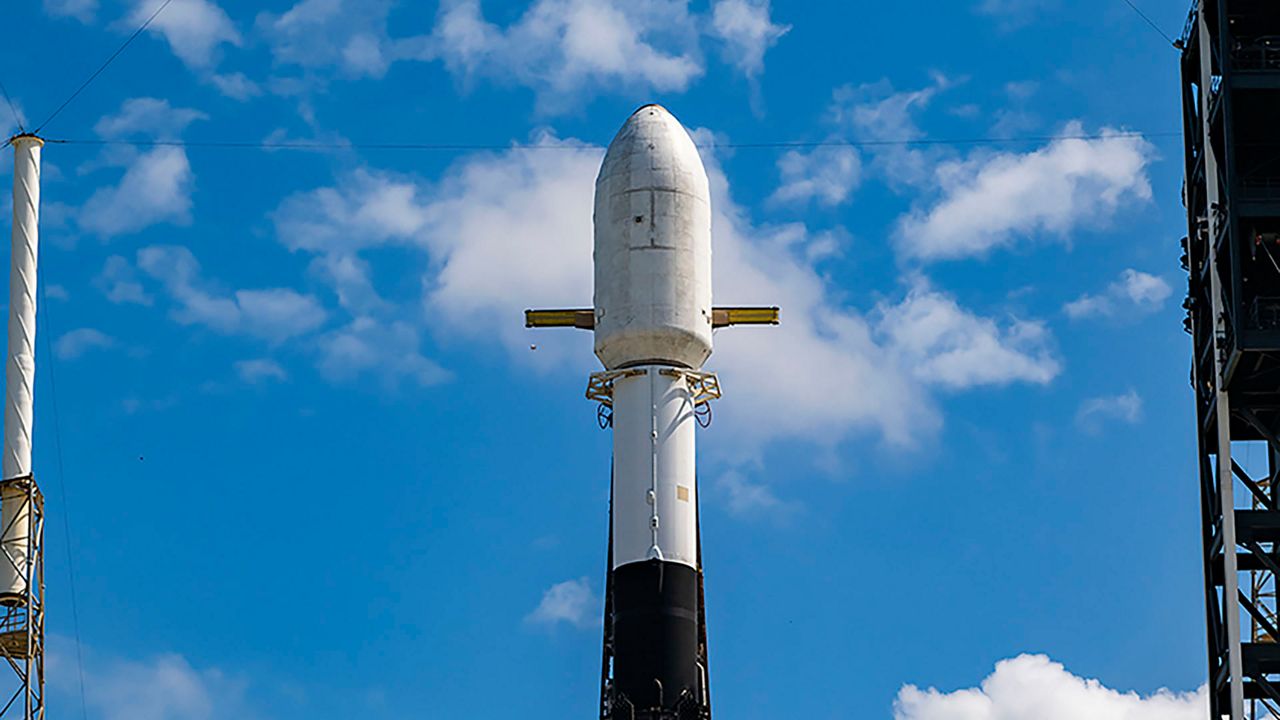
SpaceX to put 27 Starlink satellites into orbit with launch Wednesday
How did your country report this? Share your view in the comments.
Diverging Reports Breakdown
SpaceX completes 2nd launch from Space Coast in 1 day
The Falcon 9 rocket took off on Starlink 10-16 Mission at 3:54 p.m. EDT. It was the 20th mission for the Falcon 9’s first-stage booster B1080. The 27 satellites from the Starlink company, owned by SpaceX, will head to low-Earth orbit. The 45th Weather Squadron had forecast an 80% chance of favorable launch conditions, with the only concern being the cumulus cloud rule.
What You Need To Know Starlink 10-16 Mission lifted off at 3:54 p.m. Wednesday from Space Launch Complex 40
The Falcon 9 rocket booster made its 20th flight Get more space coverage here ▶
The Falcon 9 rocket took off on Starlink 10-16 Mission from Space Launch Complex 40 at Cape Canaveral Space Force Station at 3:54 p.m. after some slight delays from its original planned launch time. Earlier in the day, SpaceX had targeted a 1:15 p.m. EDT liftoff but later pushed it to 1:22, then three other gradual delays. The launch window included backup opportunities available until 4:32 p.m. EDT.
The 45th Weather Squadron had forecast an 80% chance of favorable launch conditions, with the only concern being the cumulus cloud rule.
Find out more about the weather criteria for a Falcon 9 launch.
Wednesday marked a rare double launch day for the Space Coast as SpaceX’s Falcon 9 rocket and its crewed Dragon capsule sent up the Axiom Mission 4 (Ax-4) from Launch Complex 39A at the Kennedy Space Center at 2:31 a.m. EDT. That launch sent four astronauts to the International Space Station, the fourth private mission by Axiom Space.
An even 20 flights
This was the 20th mission for the Falcon 9’s first-stage booster B1080.
After the stage separation, the first-stage rocket landed on the droneship Just Read the Instructions, which was stationed in the Atlantic Ocean.
About the mission
The 27 satellites from the Starlink company, owned by SpaceX, will head to low-Earth orbit to join the thousands already there.
Once deployed and in their orbit, they will provide internet service to many parts of Earth.
Dr. Jonathan McDowell, of Harvard-Smithsonian Center for Astrophysics, has been recording Starlink satellites.
Before this launch, McDowell documented the following:
SpaceX completes 2nd launch from Space Coast in 1 day
The Falcon 9 rocket took off on Starlink 10-16 Mission at 3:54 p.m. EDT. It was the 20th mission for the Falcon 9’s first-stage booster B1080. The 27 satellites from the Starlink company, owned by SpaceX, will head to low-Earth orbit. The 45th Weather Squadron had forecast an 80% chance of favorable launch conditions, with the only concern being the cumulus cloud rule.
What You Need To Know Starlink 10-16 Mission lifted off at 3:54 p.m. Wednesday from Space Launch Complex 40
The Falcon 9 rocket booster made its 20th flight Get more space coverage here ▶
The Falcon 9 rocket took off on Starlink 10-16 Mission from Space Launch Complex 40 at Cape Canaveral Space Force Station at 3:54 p.m. after some slight delays from its original planned launch time. Earlier in the day, SpaceX had targeted a 1:15 p.m. EDT liftoff but later pushed it to 1:22, then three other gradual delays. The launch window included backup opportunities available until 4:32 p.m. EDT.
The 45th Weather Squadron had forecast an 80% chance of favorable launch conditions, with the only concern being the cumulus cloud rule.
Find out more about the weather criteria for a Falcon 9 launch.
Wednesday marked a rare double launch day for the Space Coast as SpaceX’s Falcon 9 rocket and its crewed Dragon capsule sent up the Axiom Mission 4 (Ax-4) from Launch Complex 39A at the Kennedy Space Center at 2:31 a.m. EDT. That launch sent four astronauts to the International Space Station, the fourth private mission by Axiom Space.
An even 20 flights
This was the 20th mission for the Falcon 9’s first-stage booster B1080.
After the stage separation, the first-stage rocket landed on the droneship Just Read the Instructions, which was stationed in the Atlantic Ocean.
About the mission
The 27 satellites from the Starlink company, owned by SpaceX, will head to low-Earth orbit to join the thousands already there.
Once deployed and in their orbit, they will provide internet service to many parts of Earth.
Dr. Jonathan McDowell, of Harvard-Smithsonian Center for Astrophysics, has been recording Starlink satellites.
Before this launch, McDowell documented the following:
Source: https://mynews13.com/fl/orlando/space/2025/06/25/spacex-starlink-12-24
